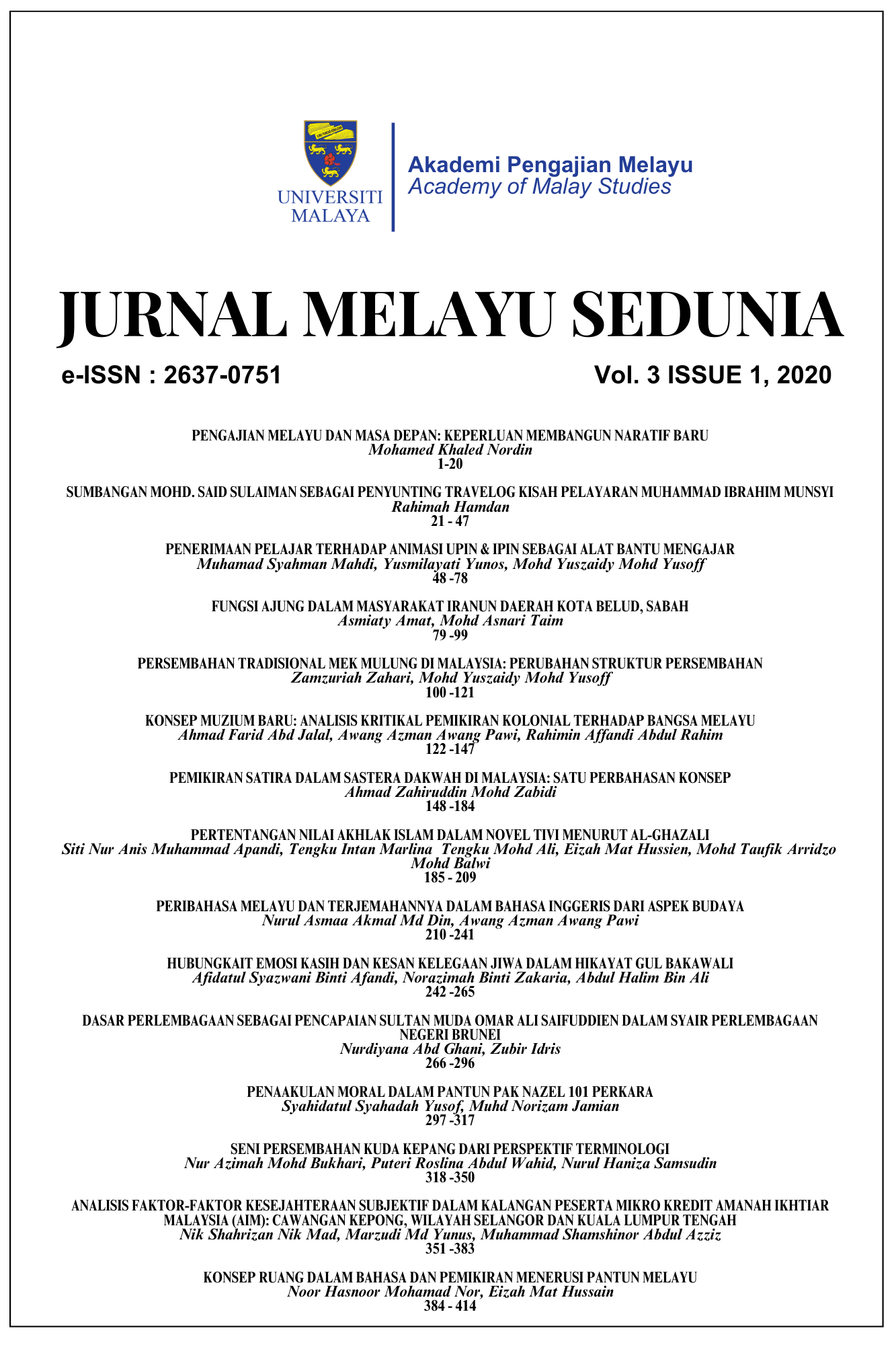SENI PERSEMBAHAN KUDA KEPANG DARI PERSPEKTIF TERMINOLOGI
Keywords:
Terminology, Kuda Kepang Dance, Performance Art, Malay Culture, Social ChangeAbstract
This paper aims to look at the terminology as a tool to generate knowledge and the development of local wisdom of the Malay cultural dances, namely the kuda kepang dance. The Malay performing arts belongs to the art of dance that involves musicians, leader of the dancers, and dancers. A kuda kepang is a woven statue shaped like a horse without legs. This dance is usually performed at ceremonies in conjunction with celebrating dignitaries, wedding and festive days. Most of the coining of the term in the Malay cultural dances, kuda kepang occured spontaneously by the local people. Based on the General Theory of Terminology and Socioterminology, it is found that the use of the term is influenced by the social changes of the speaker community that have to do with the cultural identity of the speaker. The researchers have collected 52 terms based on the basic concepts of tools. Based on the classification of terms in terms of conceptual relationship, the researcher applies the concept system introduced by Wuster (Felber, 1995), namely, logical, ontology, associate and mixed. In the context of the establishment of a culture of knowledge, the existence of the term in various fields of knowledge has become a symbol of the process of intellectualization in Malay and accordingly integrity of the Malay language as the language of knowledge is maintained. The findings of this study also provides knowledge as to how to build a glossary of performing arts of kuda kepang to facilitate researchers or individuals who are interested in kuda kepang dance as a reference.


